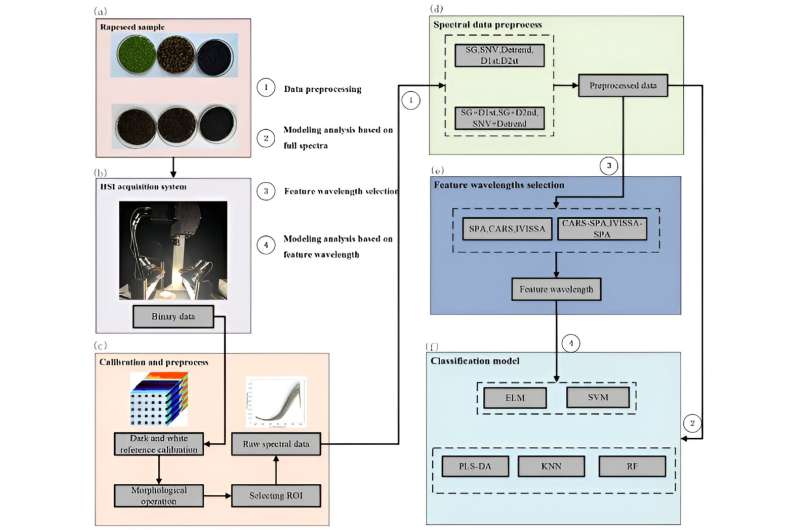Rapeseed oil, a key player in the global oilseed market, faces a challenge: achieving uniform seed maturity. Uneven flowering can lead to a mixed bag of seeds, impacting both quality and yield. Traditional methods for assessing maturity often involve sacrificing plants, making them impractical for large-scale applications.
However, a new study published in Plant Phenomics (January 2024) offers a promising solution: hyperspectral imaging (HSI) combined with machine learning.
HSI is a powerful technology that goes beyond capturing simple color images. It collects data across a wide range of wavelengths, providing a detailed picture of an object's spectral characteristics. In this study, researchers leveraged HSI to analyze the spectral fingerprints of rapeseed at different maturity stages.
The raw spectral data underwent a makeover using techniques like Savitzky-Golay smoothing and Standard Normal Variate (SNV). These methods cleaned up the data by reducing noise and highlighting features most relevant to maturity classification.
The analysis revealed distinct spectral patterns across different maturity stages. Notably, the fully mature rapeseed showed a clear difference from green and yellow stages, especially in the 420-982 nm wavelength range.
Next came the modeling stage. The researchers compared different approaches, including preprocessing methods and machine learning algorithms like Extreme Learning Machine (ELM) and Support Vector Machine (SVM). The key finding: models using preprocessed data significantly outperformed those using raw data. Techniques like D2nd derivative and combinations like SG+D1st yielded high accuracy (above 92%) in predicting maturity.
But the researchers didn't stop there. They further refined the model by selecting the most informative wavelengths for maturity classification. This step, known as feature wavelength selection, involved algorithms like CARS and IVISSA-SPA.
Models built using these selected features achieved even better results. The champion model, D2nd-IVISSA-SPA-SVM, boasted an impressive 97.86% accuracy. This approach not only improved accuracy but also addressed data redundancy, highlighting the importance of selecting optimal features for robust models.




0 Comments